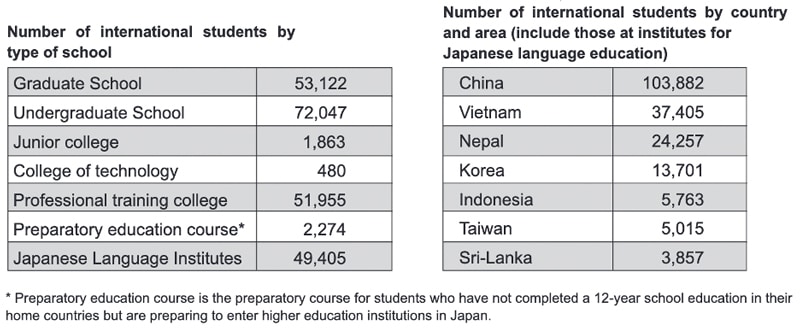Japanese universities to raise international student fees
- Many Japanese universities will raise tuition fees for international students as a governmental decree comes into effect
- They are now permitted to charge foreign students as much as 20% more in tuition than domestic students
- The rationale is to provide more budget for Japanese universities to improve facilities and Japanese language supports
- Japan has a goal to attract 400,000 international students by 2033 and a target of employing 60% of international student graduates
International students will now find it more expensive to study at many national universities in Japan. International students previously paid the same tuition as domestic students, but the government has decided that universities can charge them up to 20% more than the average tuition of 535,800 yen (US$3,500). There 86 national universities in Japan.
The basis for the increase is that it is more costly to host international students than domestic students given that foreign students often need more supports, such as Japanese-language training, help with writing essays in Japanese, and accommodation assistance.
The government does not expect tuition hikes to impact international student demand, since even a 20% tuition increase will not see Japan join the ranks of most expensive places to study. Tuition fees in Australia, Canada, the UK, and the US are much higher.
An official at a national university commented: "To demonstrate that tuition hikes are necessary, we plan to improve facilities for foreign students.” And a senior education ministry official said, “The merits for foreign students will be significant, so we don't expect tuition hikes to discourage overseas applicants.”
The Japanese government has set a goal of 400,000 international students by 2033, up 30% from 2019 levels. As of 2022, there were 231,150 international students in Japan according to the Japan Student Services Organization (JASSO), the lowest enrolment for Japan in years. In 2019, enrolment stood at 312,214. Japan was among the countries that kept borders shut for the longest during the COVID-19 pandemic.
The vast majority of international students in Japan come from elsewhere in Asia, with China, Vietnam, Nepal, Korea, and Indonesia the five largest senders, representing 80% of total foreign enrolment in 2022. China remains by far the largest student market for Japanese educators with nearly 104,000 students last year, 45% of total international enrolment.

Language barrier poses a challenge in reaching target
Industry insiders note that increasing language supports and expanding English-language instruction could be key to Japan reaching its 400,000 international student target. QS notes that:
“The majority of undergraduate programs in Japan are provided in Japanese, so it is slim pickings for those who do not know the language. While there is currently fewer than 100 undergraduate courses offered in English, there are plans to double that number to attract more foreign students.”
Another conundrum is that if international students opt for English-language instruction, it becomes more difficult to stay and work in Japan after graduating. Professor Akiyoshi Yonezawa, Vice-Director, International Strategy Office at Tohoku University told QS:
“We need to transform this structure into a more internationally competitive, acceptable structure. If you choose [the] English medium instruction, it is very difficult to get a job in a Japanese company- that is a dilemma.”
Language issues may also be hampering the Japanese government’s goal of employing 60% of international students by 2033. In 2018, only 48% were employed, according to Japan Student Services Organisation (JASSO). Japan has a rapidly aging population and encouraging more international students to study and work in Japan is thus an important strategy for invigorating the labour force.
The push is on to keep Chinese students
China is by far the top sending country for Japanese universities and two-year colleges, especially at the graduate and postgraduate levels, where 6 in 10 students are Chinese. However, the number of Chinese students dipped to 85,760 in 2022 from 95,000 in 2020.
Chinese graduates have also been a key source of talented labour for Japan’s workforce and scientific industries, but many Chinese are now choosing to return home after their studies. University World News reports: “Justice Ministry data on applications for work visas in 2022 showed an increase of 9% for Chinese students, to 850 individuals, compared to the previous year. But in the same period the number for Vietnamese shot up by 22% or 1,500 individuals.”
Vietnamese students are increasingly drawn to Japan. A recent study from Acumen found that Japan and Korea now outpace the US, Australia, and Canada in terms of their popularity among Vietnamese families.
For additional background, please see:















